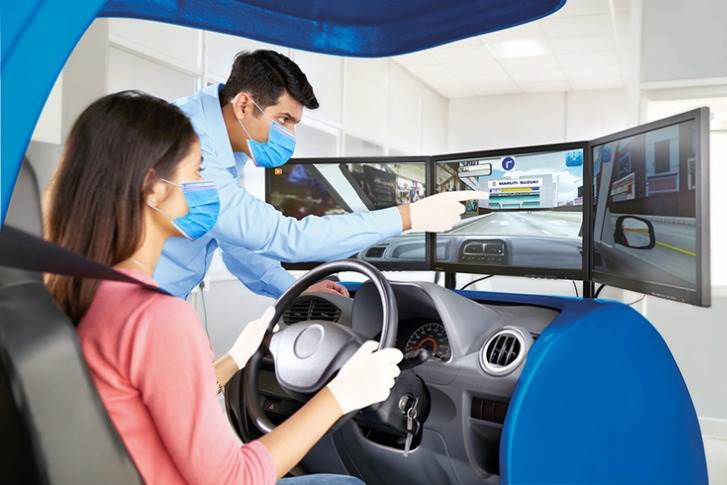Key Takeaways
- Driving simulators are revolutionizing driver education by providing safe, repeatable, and customizable training experiences.
- Recent advances bring realism and adaptability that better prepare drivers for real-world scenarios.
- Research consistently shows that skills learned in simulators translate to improved on-road performance.
- Simulators benefit new learners, experienced drivers, and transport professionals by refining judgment and reactions.
- Authoritative organizations like NHTSA endorse simulation as part of broader road safety measures.
- Continuous technological improvements drive simulator adoption in commercial and educational sectors globally.
- Simulators support safer roads by enabling tailored training focused on hazardous conditions and complex maneuvers.
- Emerging partnerships and legislative attention are boosting awareness of simulation’s role in public safety.
Why Simulated Training is Becoming Standard in Driver Education
Driver training has seen a dramatic shift in recent years, as institutions at every level incorporate technology-driven resources into curricula. While traditional hands-on experience remains fundamental, driving simulators have risen as a modern solution for creating immersive, realistic, and safe training environments. The advantages become even clearer for programs focused on commercial and heavy vehicle operators, where truck driving simulators provide unique benefits. These robust systems enable trainees to encounter diverse roadway, weather, and emergency scenarios without the risks or costs associated with real vehicles on public roads.
Simulation in driving education enables organizations to customize lessons for diverse driving backgrounds and objectives, making instructional time more engaging and effective. It boosts confidence among new drivers and ensures compliance with industry regulations. Simulators teach advanced concepts like defensive driving, situational awareness, and split-second decision-making. Customized lessons address knowledge gaps and help drivers internalize procedures for high-consequence situations. Simulated driver education also democratizes access to training, allowing students in areas with limited resources to practice and refine skills year-round, supporting road safety and equitable learning opportunities.
The Science Behind Learning in Simulated Environments
Research shows that driving simulators are effective in driver training due to their experiential learning approach. This method, which involves active application of concepts in controlled settings, leads to better retention and faster skill development compared to passive instruction. Simulation-based learning also improves muscle memory and accuracy during emergencies, as it engages the same neural pathways as actual vehicle operation.
Benefits Across the Driver Spectrum
- Beginner Drivers:Can safely experience challenging scenarios such as emergency braking or hazard perception before encountering them on public roads.
- Commercial Drivers:Receive targeted exposure to complex maneuvers, regulatory requirements, and vehicle-specific responses crucial for driving large trucks, transit buses, or specialty vehicles.
- Experienced Motorists:Have opportunities to refresh skills, adapt to new technology, or practice responses to rare but critical events without endangering themselves or others.
This broad utility reduces training costs, minimizes risk, and creates a more controlled environment for assessing and improving driver competency. Organizations and individuals alike benefit from safer, better-prepared road users.
Features Driving Simulator Adoption
Modern driving simulators provide realism through detailed graphics, motion feedback, and interactive scenarios. They offer adaptive difficulty levels, comprehensive data logging tools, scenario generation for unpredictable events, and safe recreation of dangerous situations without real-world consequences. These tools, combined with real-time feedback loops, make simulations an essential part of modern driver education.
What the Research Says About Effectiveness
The National Highway Traffic Safety Administration (NHTSA) supports the use of simulation in road safety strategies, citing its effectiveness in reducing accidents and high-risk behaviors among trainees. This approach is also influencing automotive development and public policy, as it prepares drivers for complex roads. Instructors praise students with simulation backgrounds for their increased composure, hazard recognition, and adaptability.
Practical Applications in Schools and Industry
Public high schools, truck academies, and transit authorities use simulation to teach skills. For freight, logistics, and emergency response, simulators help maintain compliance, lower errors, and prepare drivers for real-world challenges. Fleet managers value simulation assessments for identifying gaps, customizing retraining, and reducing disruptions, ensuring safety and accountability in transportation.
Broader Benefits for Road Safety
Widespread adoption of simulator-based training translates to measurable improvements in road safety across communities. Trained, confident drivers are both less likely to panic in hazardous conditions and better equipped to avoid common accident causes such as distraction or overcorrection. These gains support ambitious public safety goals set by agencies like the NHTSA, while also fueling ongoing global interest in technology-driven solutions for road users of all backgrounds.
The Road Ahead: Emerging Partnerships and Innovation
The evolution of driving simulation is being shaped by active collaboration among governments, education providers, and private sector leaders. New platforms are rapidly emerging, equipped to model evolving vehicle technologies, infrastructure changes, and increasingly diverse learner needs. Legislative momentum, together with international best practices, signals that simulators will be further integrated into driver licensing and continuing education standards over the next decade. As innovation continues, simulator-based training will remain central to producing safer drivers and more resilient transportation networks worldwide.









